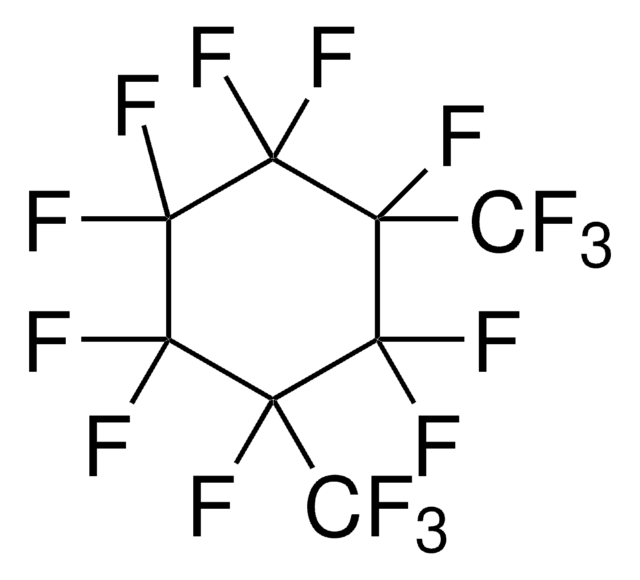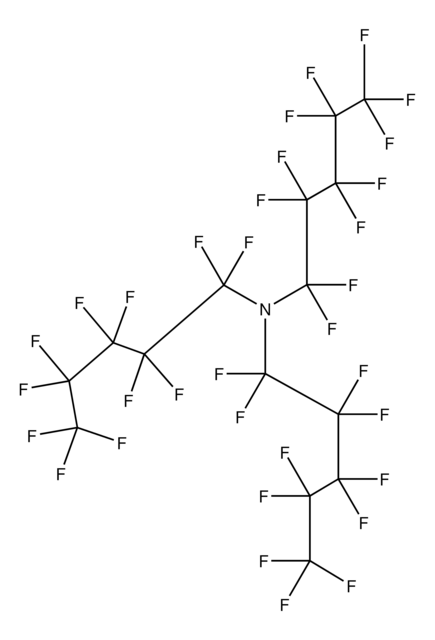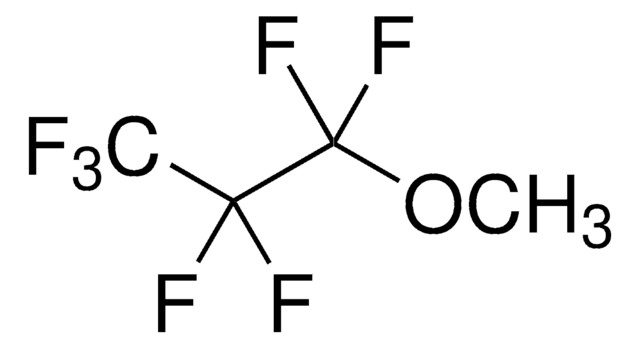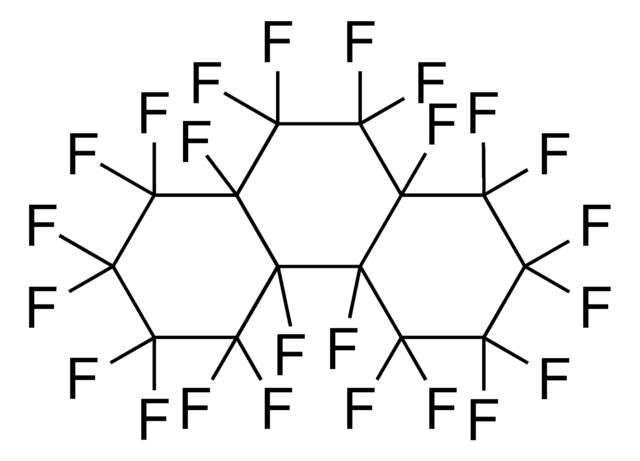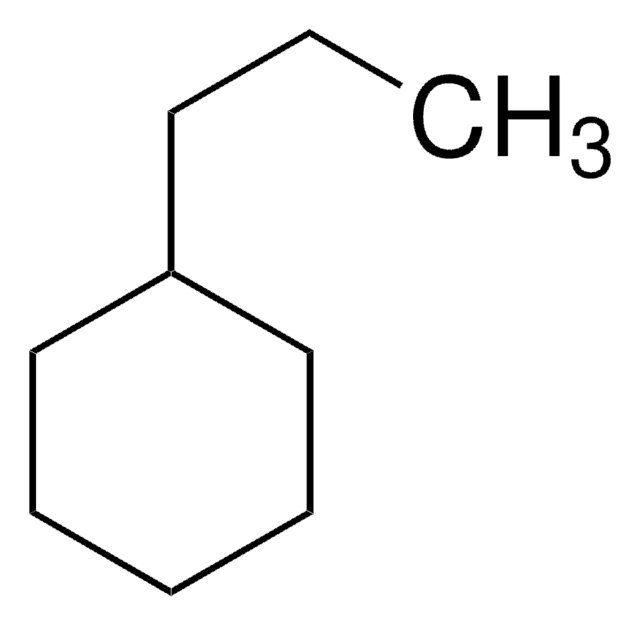302937
Perfluoro(methylcyclohexane)
technical grade, 90%
Synonym(s):
(Trifluoromethyl)undecafluorocyclohexane, Perfluoromethylcyclohexane
About This Item
Recommended Products
grade
technical grade
Quality Level
Assay
90%
form
liquid
refractive index
n17/D 1.285 (lit.)
bp
76 °C (lit.)
density
1.787 g/mL at 25 °C (lit.)
SMILES string
FC(F)(F)C1(F)C(F)(F)C(F)(F)C(F)(F)C(F)(F)C1(F)F
InChI
1S/C7F14/c8-1(7(19,20)21)2(9,10)4(13,14)6(17,18)5(15,16)3(1,11)12
InChI key
QIROQPWSJUXOJC-UHFFFAOYSA-N
Looking for similar products? Visit Product Comparison Guide
General description
Application
- A reactant to synthesize perfluoro-2-methylcyclohex-1-enolate by photochemical reaction with tetrabutylammonium iodide in water.
- A fluorous solvent to synthesize polynorbornene via ring-opening metathesis polymerization (ROMP) of norbornene using fluorous Grubbs′ second-generation catalyst.
It can also be used as a solvent to investigate fluorophilicity of a series of hydrocarbon and fluorocarbon-functionalized nicotinic acid esters.
Storage Class Code
10 - Combustible liquids
WGK
WGK 3
Flash Point(F)
Not applicable
Flash Point(C)
Not applicable
Personal Protective Equipment
Certificates of Analysis (COA)
Search for Certificates of Analysis (COA) by entering the products Lot/Batch Number. Lot and Batch Numbers can be found on a product’s label following the words ‘Lot’ or ‘Batch’.
Already Own This Product?
Find documentation for the products that you have recently purchased in the Document Library.
Our team of scientists has experience in all areas of research including Life Science, Material Science, Chemical Synthesis, Chromatography, Analytical and many others.
Contact Technical Service